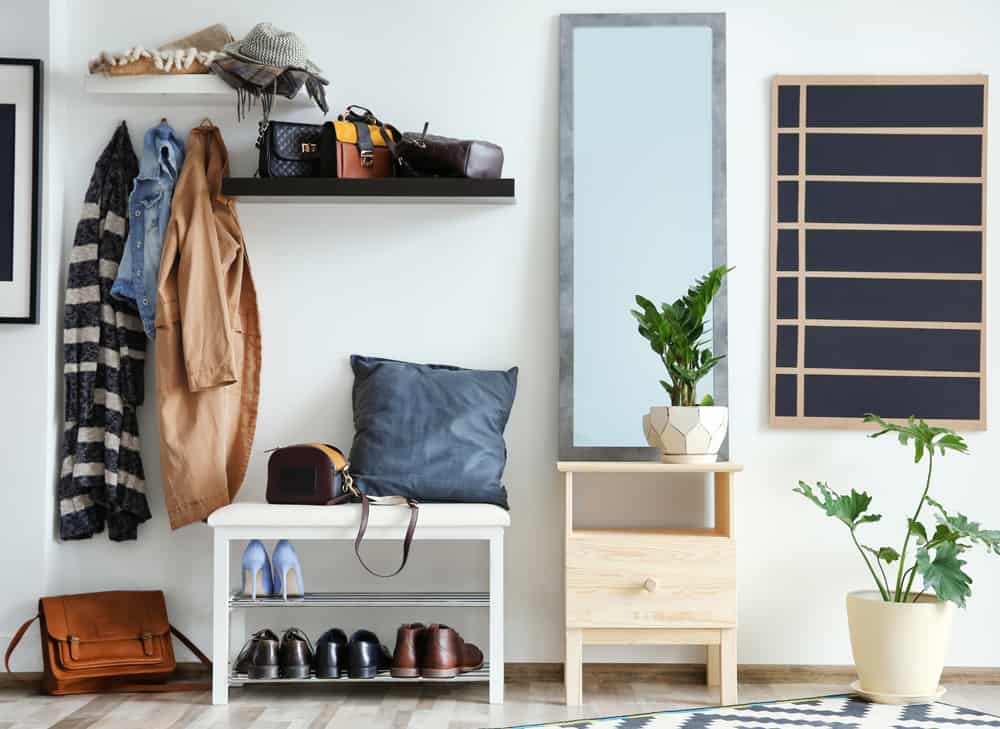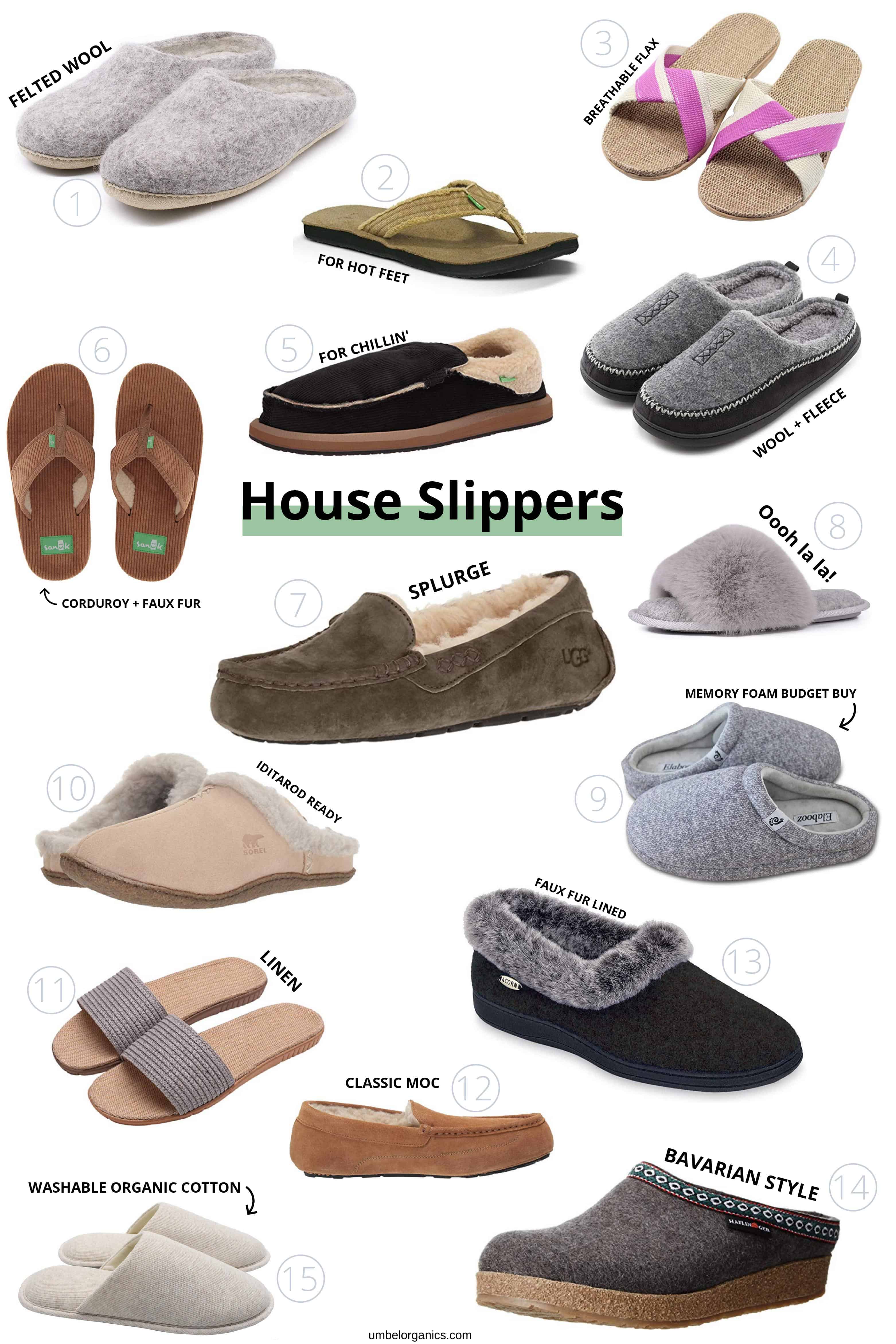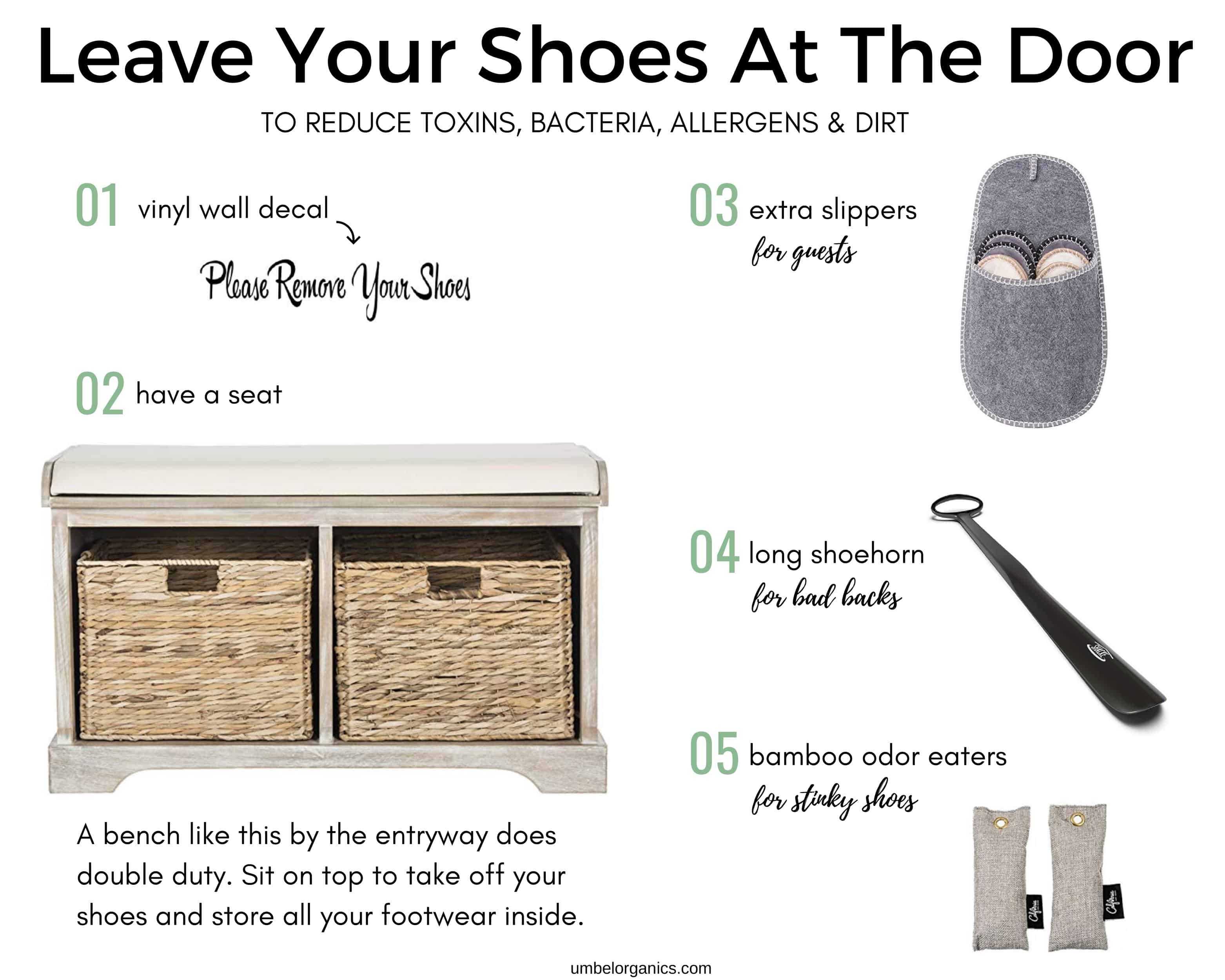Leave Your Shoes At The Door For a Healthy Home
Want to know 4 good reasons to take your shoes off at the door? Establish a no-shoe policy for an easy way to detox your home. Bonus- from organic cotton to wool felt and beyond, we’ve got 15 slippers you’ll want to slip on right when you get home!

Disclosure: This post contains affiliate links, which means if you make a purchase through these links, we may receive a small commission at no extra cost to you.
Do you have a no-shoe policy at your house? We do, and it’s one of the easiest ways to DETOX YOUR HOME without much effort. We lived in Canada for 2 years, and it was common practice there to leave your shoes at the door. With a new baby in the house we quickly adopted this custom, and we’ve never looked back.
It may seem like an inconvenience to untie and take off your shoes in your own home or as a guest in someone else’s home, but you’d be surprised by what can get tracked in on the soles of your shoes.
Leaving shoes at the door can reduce toxins, bacteria and allergen levels throughout your home. Another bonus—you won’t have to constantly clean up mud and dirt. Sounds good to me! Establish a no-shoe policy at the door and slip your feet into some cozy slippers instead.
Leave Toxins At The Door
Whether you’re walking on treated grass, playing at the park or traipsing through a freshly sealed parking lot, the soles of your shoes can pick up pesticides and other harmful chemicals. And those toxins can then be distributed throughout your home if you keep your shoes on.
A study in Environmental Science & Technology (1) found that a common lawn herbicide was tracked throughout homes starting at the entryway and radiating into other highly trafficked areas of the house. Pesticide levels inside homes were tested both prior to and after outside application of the herbicide.
Removing shoes at the door was one of the most significant factors affecting residue levels indoors after application. In other words, homes where shoes were removed at the door had lower pesticide levels measured throughout the rest of the house.
- 2,4-D: Exposure to herbicide 2,4-D can cause minor skin rashes and gastrointestinal upset. Long-term exposure to this chemical has been linked to non-Hodgkins lymphoma and sarcoma (2,3). The herbicide 2,4-D is also considered an endocrine-disrupting chemical (4), and can mimic hormones.
- Roundup: Glyphosate is the key component of the herbicide Roundup, the world’s most widely used herbicide. The latest study (5) suggests a compelling link between exposure to glyphosate-based herbicides and increased risk for non-Hodgkin’s lymphoma.
- Lead dust: Was your house built before 1978? Lead dust from exterior lead-based paint can be tracked into the home from contaminated soil. Other lead sources include past use of leaded gas (in highly trafficked areas) and industrial pollution. The EPA recommends that children and adults playing or working outdoors leave their shoes at the door to reduce exposure to lead (6).
- Coal tar: Coal tar particles can be tracked through the home on the soles of shoes. A Baylor University study found that subjects living in close proximity to asphalt pavement sealed with coal tar had an elevated risk of cancer (7).
Leave Bacteria At The Door
Being a germaphobe, this one really makes me squirm. University of Arizona microbiologist Dr. Charles Gerba found fecal bacteria on 96% of new shoes that had been worn and sampled after two weeks (8).
- E. coli: Some strains of Escherichia coli (E. coli) can make you sick, causing diarrhea, urinary tract infections, and respiratory illnesses like pneumonia (9).
A 2014 study from the University of Houston sampled four common household items (shoe bottoms, bathroom/toilet surfaces, house floor dust, and other surface swabs), and found that shoe bottom swab samples had the highest levels of samples positive for Clostridium difficile (C. diff) (10).
- C. diff: C.diff can be resistant to most antibiotics. Some patients develop colitis (11).

Leave Allergens At The Door
Mold and pollen can hitchhike inside on your shoes. A runny nose, itchy eyes or lips and sneezing are all symptoms of allergies. Minimize outdoor allergen levels inside your home by taking your shoes off at the door.
Leave Dirt At The Door
Aside from the bacterial nasties and harmful pesticides we may track in on our shoes, plain old mud and dirt can be tracked around your house if you keep shoes on.
More dirt means more cleaning, and who wants extra housework? I can personally think of plenty of other things I’d rather be doing than sweeping and vacuuming all day.
Cozy Slippers And Indoor House Shoes

- Nootkas Merino Felted Wool House Slipper
- Sanuk Men’s Fraid Not Flip Flop
- Fralosha Women’s Flax House Shoes
- HomeTop Men’s Cozy Wool Fleece Memory Foam Slippers
- Sanuk Men’s Chiba Chill Loafer
- Sanuk Women’s Furreal Classic Cord Flip Flop
- UGG Women’s Ansley Moccasin or UGG Men’s Ascot Slipper
- Longbay Women’s Faux Bunny Fur Memory Foam House Slippers
- Elabooz Women’s Memory Foam Comfort Slippers
- Sorel Women’s Nakisha Slide Slipper or Sorel Men’s Falcon Ridge Slipper
- Urban CoCo Unisex Cozy Linen Summer Slippers
- Amazon Essentials Men’s Leather Moccasins
- Acorn Women’s Faux Fur Chinchilla Collar Slippers
- Haflinger Unisex Classic Grizzly Clog
- ofoot Women’s Cozy Organic Cotton Washable House Slippers
Shop Slippers And Cozy Shoes

Shop Essentials To Keep By The Door
More Natural Living Inspiration
References
- Nishioka, M.G. et al. Distribution of 2,4-Dichlorophenoxyacetic Acid in Floor Dust throughout Homes Following Homeowner and Commercial Lawn Applications: Quantitative Effects of Children, Pets, and Shoes. Environ. Sci. Technol. 1999, 33, 9, 1359-1365.
https://pubs.acs.org/doi/abs/10.1021/es980580o - Extension Toxicology Network: A Pesticide Information Project of Cooperative Extension Offices of Cornell University, Michigan State University, Oregon State University, and University of California at Davis.
http://pmep.cce.cornell.edu/profiles/extoxnet/24d-captan/24d-ext.html#1 - Hoar, S.K. et al. Agricultural herbicide use and risk of lymphoma and soft-tissue sarcoma. JAMA. 1986 Sep 5;256(9):1141-7.
https://www.ncbi.nlm.nih.gov/pubmed/3801091 - Wissen, M. et al. Effect of Endocrine Disruptor Pesticides: A Review. Int J Environ Res Public Health. 2011 Jun; 8(6): 2265–2303.
https://www.ncbi.nlm.nih.gov/pmc/articles/PMC3138025/ - Zhang, L. et al. Exposure to glyphosate-based herbicides and risk for non-Hodgkin lymphoma: A meta-analysis and supporting evidence. Mutation Research/Reviews in Mutation Research. Volume 781, July–September 2019, Pages 186-206.
https://www.sciencedirect.com/science/article/pii/S1383574218300887 - Protect Your Family From Exposures To Lead. United States Environmental Protection Agency (EPA).
https://www.epa.gov/lead/protect-your-family-exposures-lead - Williams, E.S. et al. Coal-Tar-Based Pavement Sealcoat and PAHs: Implications for the Environment, Human Health, and Stormwater Management. Environ Sci Technol. 2012 Mar 20; 46(6): 3039–3045.
https://www.ncbi.nlm.nih.gov/pmc/articles/PMC3308201/ - Gerba, C. Fecal Bacteria Measurements on Footwear. University of Arizona. 2008 May 3.
https://www.ciriscience.org/a_96-Study-Reveals-High-Bacteria-Levels-on-Footwear - Escherichia coli (E. coli). Centers For Disease Control And Prevention. 2019 Dec. 9.
https://www.cdc.gov/ecoli/index.html - Alam, M.J. et al. Investigation of potentially pathogenic Clostridium difficile contamination in household environs. Anaerobe. 2014 Jun;27:31-3.
https://www.ncbi.nlm.nih.gov/pubmed/24657158
Zhong, P. et al. Update on Antimicrobial Resistance in Clostridium difficile: Resistance Mechanisms and Antimicrobial Susceptibility Testing. Journal of Clinical Microbiology.
top 2 images via depositphotos



























